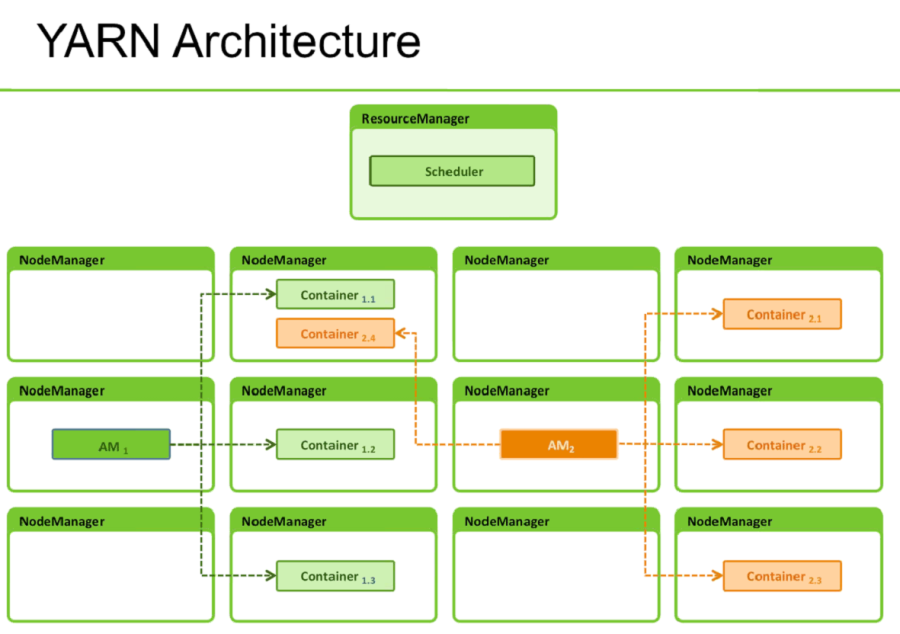Hadoop 2.0 and YARN Architecture
What is Hadoop 2.0 & YARN?
First off, a big kudos to Hortonworks for the great webinar by Arun C. Murthy ( who by the way was one of the primary people in building/releasing YARN) in which this post is based on. I really recommend watching it here.
The simplest way to understand the difference between Hadoop 1.x and Hadoop 2.x is that the architecture went from being a single use system that only handled Batch jobs to a multi-purpose system that could not only run the batch jobs that Hadoop 1.x did but also more interactive, online, streaming jobs as well. Hadoop went from using only MapReduce for not only its cluster management but also data processing. There was a lot of issues that this brought up including scalability limitations, availability, resource utilization, and more. What the architects and developers of Hadoop 2.0 did essentially was separate the cluster resource management work from MapReduce and built YARN to do it more efficiently and effectively.

There are obviously some differences that have come about from Hadoop 2.0 and one is around the concept of jobs. In Hadoop 1.0 they were called “jobs” and everything that was submitted to cluster for processing was a MapReduce Job. Now with the ability to use not only MapReduce but also the others tools like Storm and Spark a job now is referred to as an “Application”. Another concept is around the idea of a “Container”. Before with 1.0 you had fixed map & fixed reduce slots which could lead to resource contraints however with YARN you now have these containers that are basically a unit of allocation. The big payoff with containers is an increased resource utilization.
YARN Architecture
YARN is made up of 3 main pieces:
- Resource Manager
- Node Manager
- Application Master
ResourceManager (RM) is the master that arbitrates all the available cluster resources and thus helps manage the distributed applications running on the YARN system. It works together with the per-node NodeManagers (NMs) and the per-application ApplicationMasters (AMs).
- NodeManagers take instructions from the ResourceManager and manage resources available on a single node.
- ApplicationMasters are responsible for negotiating resources with the ResourceManager and for working with the NodeManagers to start the containers.
Node Manager
The NodeManager (NM) is YARN’s per-node agent, and takes care of the individual compute nodes in a Hadoop cluster. This includes keeping up-to date with the ResourceManager (RM), overseeing containers’ life-cycle management; monitoring resource usage (memory, CPU) of individual containers, tracking node-health, log’s management and auxiliary services which may be exploited by different YARN applications.
Application Master
The ApplicationMaster is, in effect, an instance of a framework-specific library and is responsible for negotiating resources from the ResourceManager and working with the NodeManager(s) to execute and monitor the containers and their resource consumption. It has the responsibility of negotiating appropriate resource containers from the ResourceManager, tracking their status and monitoring progress.
I hope you enjoyed this post. Stay tuned for another post I am working on around “Implementing Applications with YARN” which will help you in actually utilizing Hadoop and YARN. Source


























